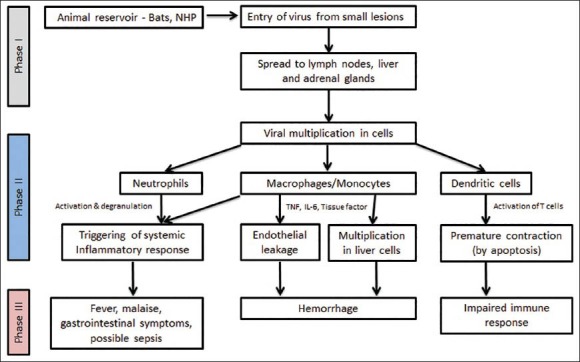Figure 1.

Diagram demonstrating the pathogenesis of Ebolavirus infection. Phase I can be characterized as the transfer of EBOV from an animal carrying the virus to a human, usually via small cutaneous lesions. Similar principles apply in human-to-human transmission during Ebola outbreaks. Phase II can be characterized as the early symptomatic stage — usually between days four and ten — where symptoms of a viral illness appear and gradually progress toward more advanced manifestations of the disease. Finally, Phase III represents the advanced Ebolavirus disease, with hemorrhagic manifestations, impaired immunity, and end-organ failure. Adapted from Feldmann H, Geisbert TW Ebola hemorrhagic fever. Lancet 2011;377:849-862. Legend: NHP = nonhuman primate; TNF = Tumor necrosis factor; IL = Interleukin
